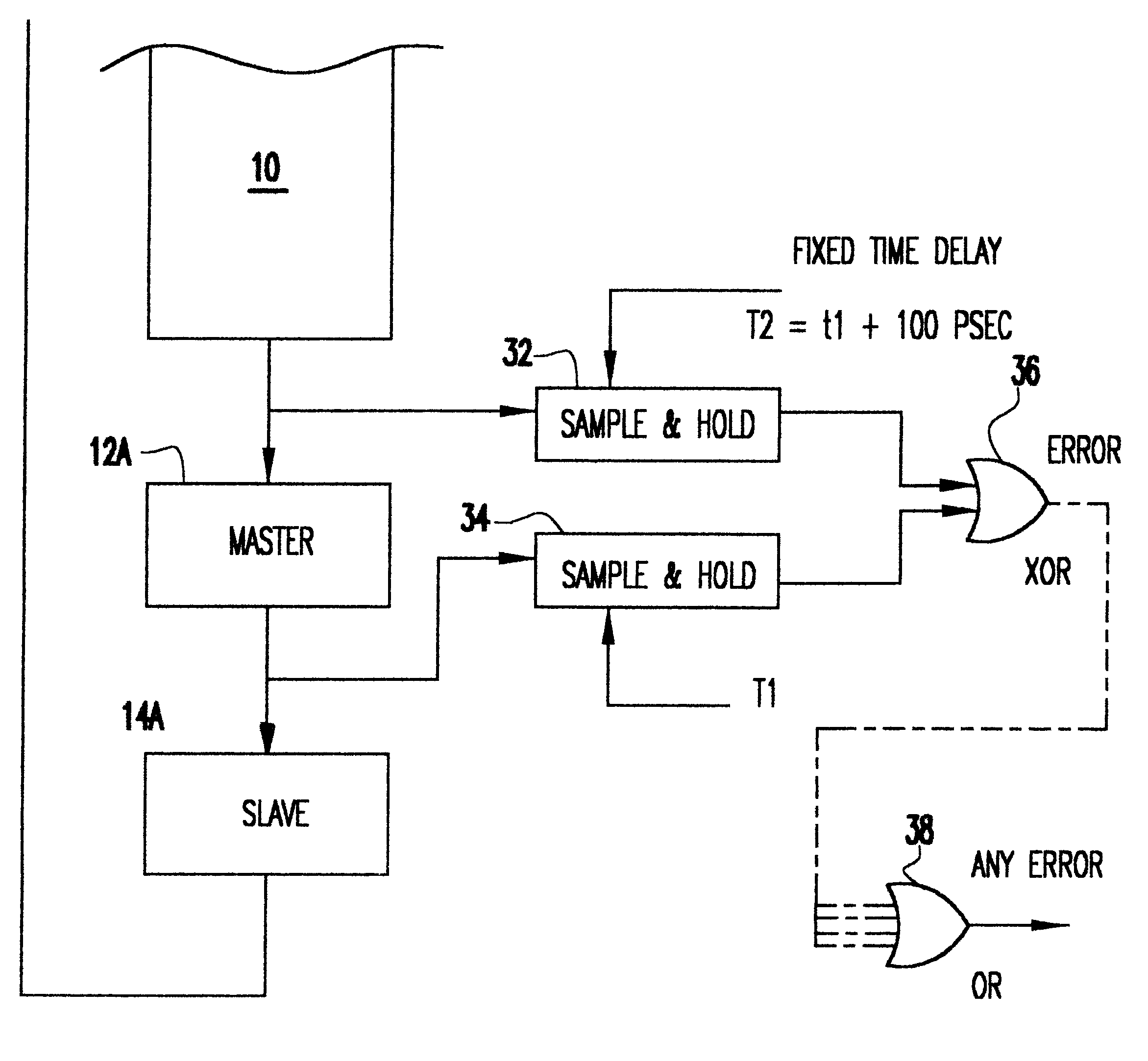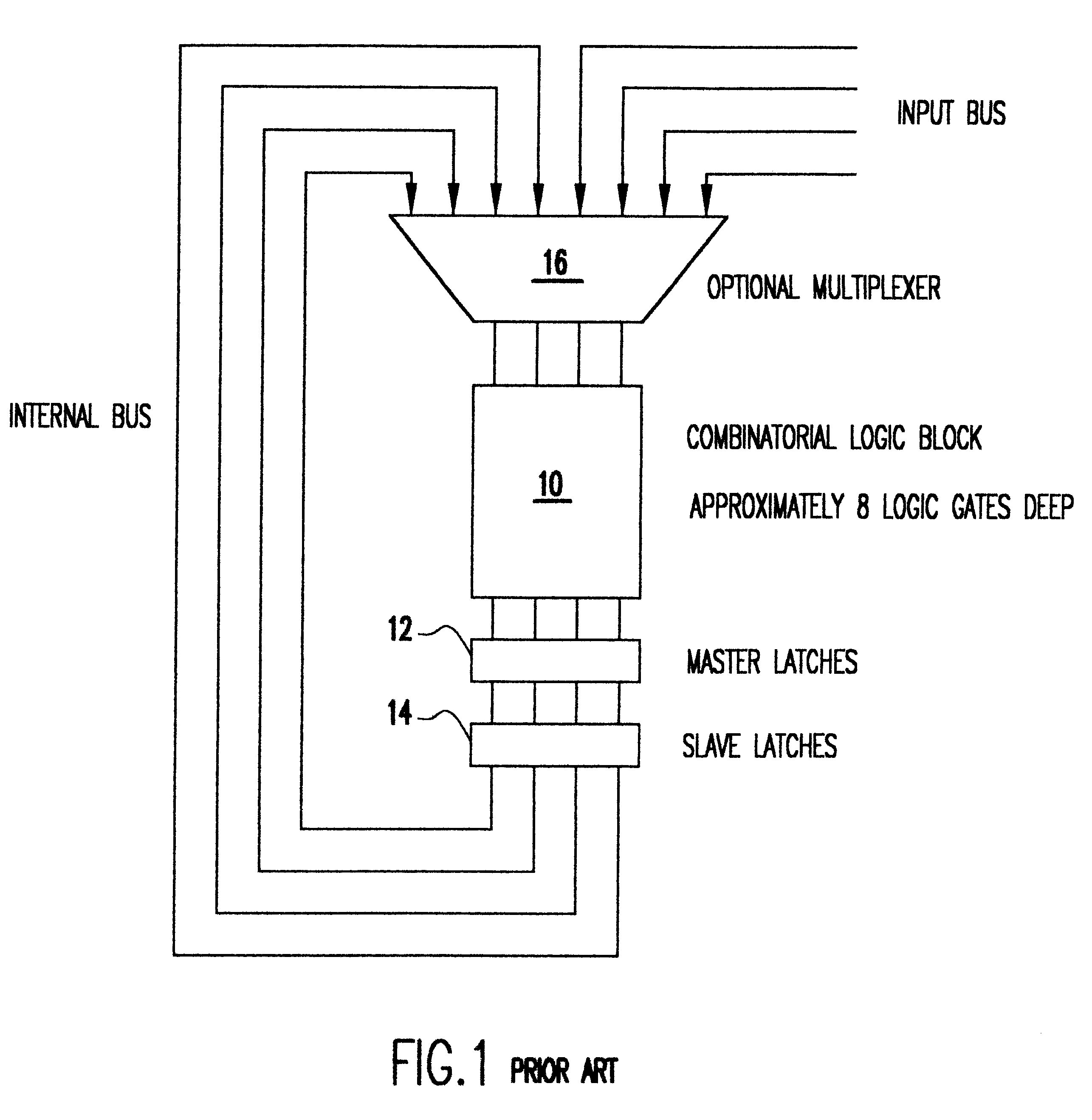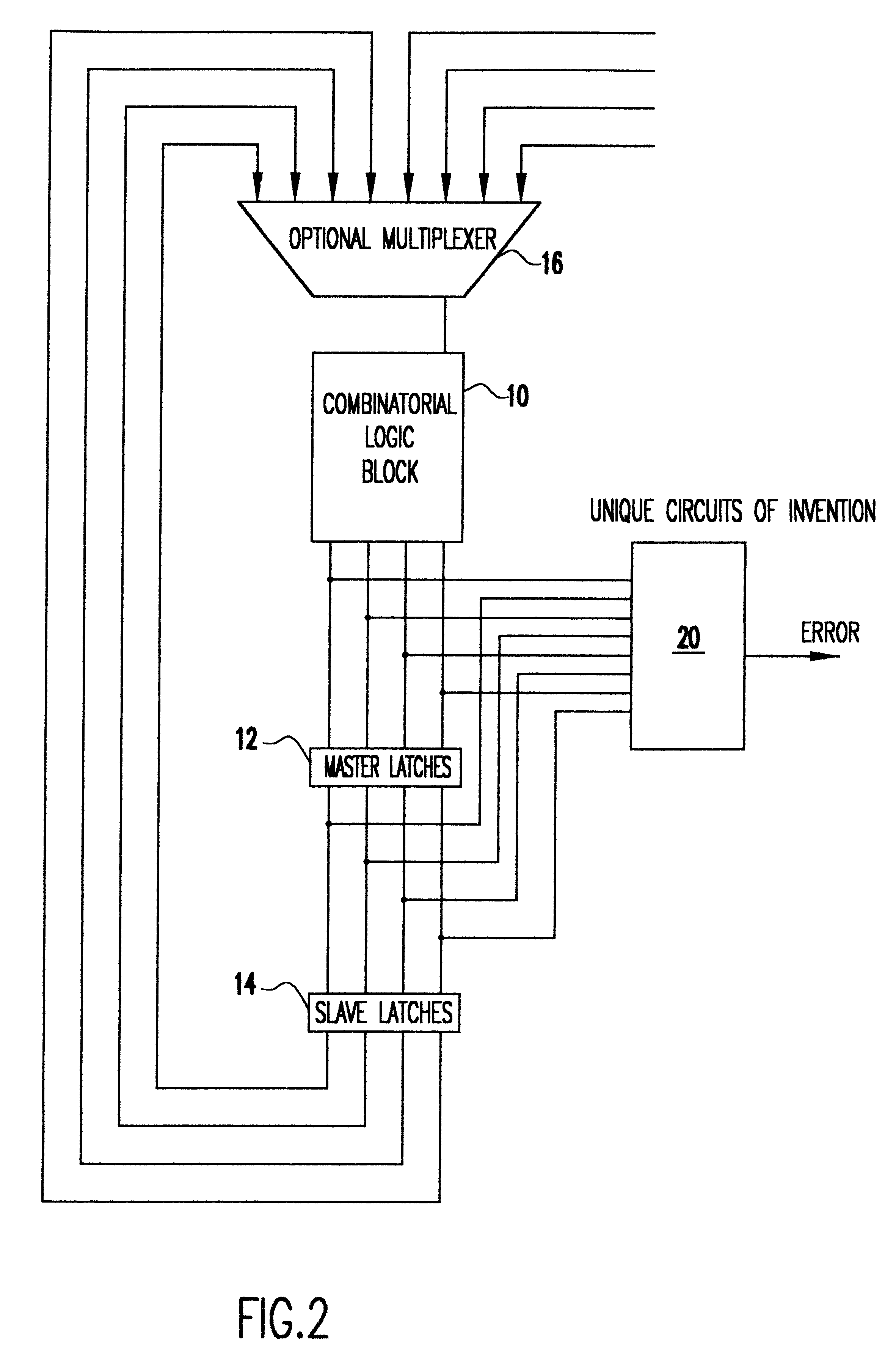System technique for detecting soft errors in statically coupled CMOS logic
a technology of statically coupled cmos logic and system technique, which is applied in the field of circuits for detecting error transients in logic circuits, can solve problems such as work failure to correct the problem, small lightly loaded nodes are vulnerable to error transients, and complex vulnerability of computations
- Summary
- Abstract
- Description
- Claims
- Application Information
AI Technical Summary
Problems solved by technology
Method used
Image
Examples
Embodiment Construction
Referring now to the drawings, and more particularly to FIG. 1, there is shown a simplified logic system represented by a typical combinatorial logic block 10 of about eight stages followed by a master and slave set of latches (registers) 12 and 14. In this example, results of previous calculations are recirculated and combined with new data for subsequent calculations in multiplexer 16. A transient error at a vulnerable node during a critical time window is captured by a master latch 12 and subsequently fed to a slave latch 14. The erroneous data then is constantly recirculated through the logic block corrupting all future calculations.
FIG. 2 shows this same simplified logic system of FIG. 1 modified to include the invention. In particular, the unique circuits of this invention are illustrated in general block form as block 20. These circuits, described in more detail with reference to FIG. 3 below, are connected to outputs of the combinatorial logic block 10 and outputs of the mas...
PUM
| Property | Measurement | Unit |
|---|---|---|
| time | aaaaa | aaaaa |
| time delay | aaaaa | aaaaa |
| time | aaaaa | aaaaa |
Abstract
Description
Claims
Application Information
 Login to View More
Login to View More - R&D
- Intellectual Property
- Life Sciences
- Materials
- Tech Scout
- Unparalleled Data Quality
- Higher Quality Content
- 60% Fewer Hallucinations
Browse by: Latest US Patents, China's latest patents, Technical Efficacy Thesaurus, Application Domain, Technology Topic, Popular Technical Reports.
© 2025 PatSnap. All rights reserved.Legal|Privacy policy|Modern Slavery Act Transparency Statement|Sitemap|About US| Contact US: help@patsnap.com



